At the final stage of the installation of plumbing fixtures, they are connected to a common piping system. In order to perform this type of work, you must first purchase special devices. In this article we will talk about choosing a hose for a kitchen faucet. Consider the most popular and reliable types of such products, and also tell you how to connect them correctly.
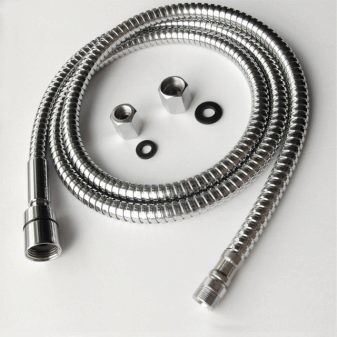
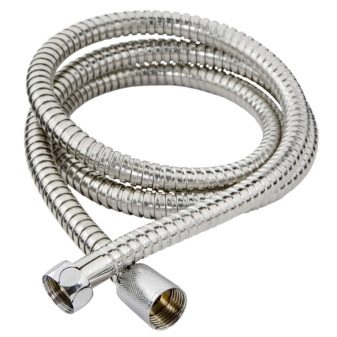
Features
The modern plumbing market is full of all kinds of options and types of eyeliners. This makes the choice quite difficult if you are not a plumber, and you do not understand anything about it. But the reliable and correct functioning of the pipeline system and the number of repairs that will be made during operation depend on the right choice of hose.
That is why most experts recommend installing not a rigid pipe under the sink, as was previously accepted, but more modern - reliable and flexible. Such a connecting hose was put into operation relatively recently, but immediately gained demand from the consumer.
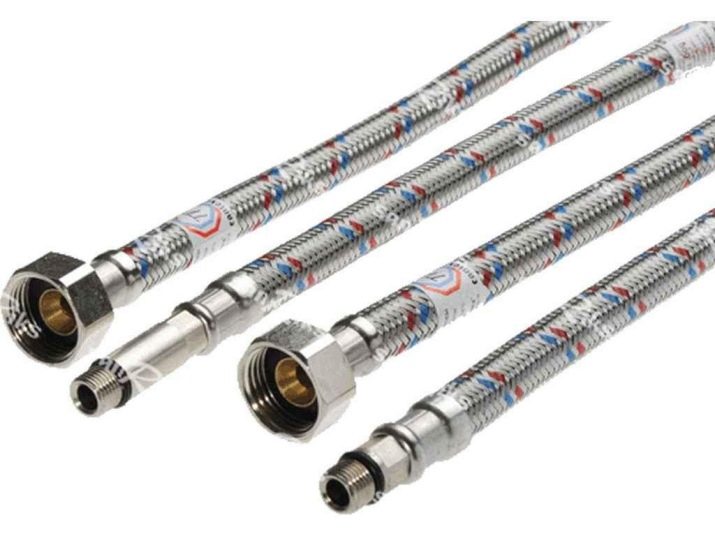
Before you begin to consider the varieties of flexible connections for a kitchen faucet, let's find out what is its advantage over analogues. So, it is characterized by:
- compactness - does not take up much space under the sink;
- mobility is a very convenient and practical property, because if necessary, you can move or rotate the hose in the other direction;
- easy and quick connection - to connect the hose to the pipeline, you need to have the most ordinary tools, which in most cases every house has;
- resistance to water hammer - the hose withstands even sudden pressure drops in the system;
- long term of operation - the manufacturer claims that the term of use can be more than 20 years;
- low cost - the price of this product is much cheaper than, for example, metal pipes;
- the possibility of modernization of classic mixers - today, such an invention as a faucet with a shower is in demand (in this case, a flexible pipe is connected with a common water supply pipeline and with a retractable watering can).
The sizes of flexible eyeliner can be very different. For example, the length of the hose can be from 20 to 180 cm. But the diameter of the connecting hole is 5, 10 and 15 mm.
Thanks to this rich assortment, it is possible to choose the hose you need for connection.
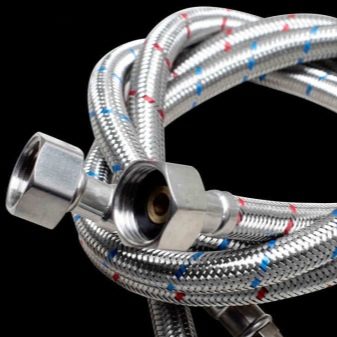
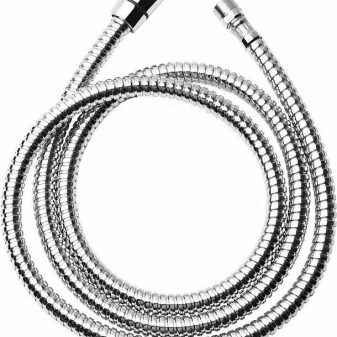
Varieties
Now let's talk about varieties of such products.
Reinforced hose
Made of a sealed rubber tube, a metal wire braid is used to protect it. To connect using special fittings: fittings and connecting nuts. Reinforced hose has several advantages.
- For its connection with the pipeline and the mixer, you do not need to use corners and adapters. Due to the flexibility of the hose, it can be connected curved. That is why this type of eyeliner is considered ideal for installation under the kitchen sink.
- It calmly reacts to various unforeseen changes in temperature and pressure surges, while there is no additional load on a fixed element.
- Resistant to water hammer.
- Installation is quick and easy: you do not need a soldering iron or a welding machine.
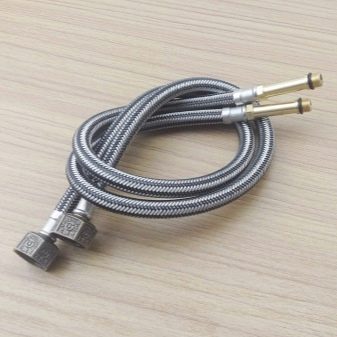

I would also like to say about the cost of this design: it is absolutely acceptable, and everyone can afford such a hose.
But be that as it may, there were some flaws.
- The inner pipe wears out quickly.
- A regular replacement of the sealing gum is required. If it is not replaced, there is a chance of leaks and floods.
- Reinforced hose winding made of inexpensive metal quickly oxidizes and collapses. That is why such connections can be short-lived.
But the main drawback of the reinforced hose is the presence of a large number of cheap fakes that fail, without serving even a year. We will talk about how to choose the right reinforced hose for the kitchen sink a little lower.
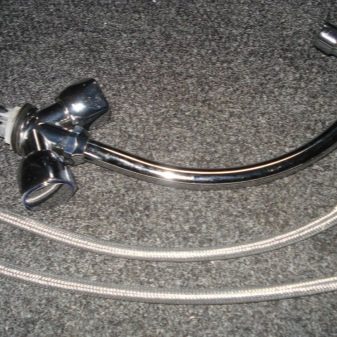
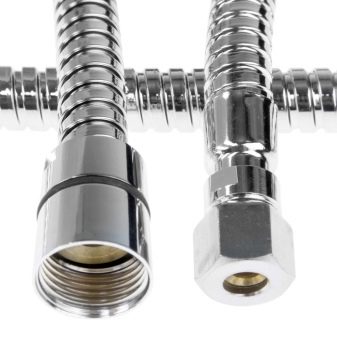
Bellows flexible pipe
This type of connection is practically no different from the previous one, but a few differences are still worth considering:
- the bellows hose does not have an internal rubber or rubber insert;
- its outer metal layer is not a woven wire, but a continuous corrugated tube.
The bellows pipe has several advantages, among which I would like to note the following:
- resistant to all types of mechanical damage;
- withstands pressure of 50 ATM .;
- trouble-free operation is at least 25 years;
- manufacturers use the laser welding method to connect fittings to the hose, which makes it possible to strengthen a weak area and make the joint more reliable.
The disadvantages of this product include the cost - it is quite high, and the issuing of strong noise during the passage of water.
Manufacturers use metals such as stainless steel, brass and bronze to make the bellows tube.
If you see that the store has a similar product made of non-ferrous metal, you can be sure that it was manufactured by a European company, and this is an elite plumbing.
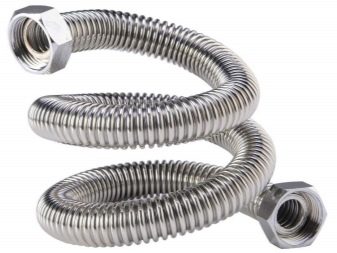

Criterias of choice
Earlier in the article, we talked about the most commonly used and latest types of hoses for connecting a kitchen sink to a pipeline. Now let's decide on the selection criteria for each option.
When choosing a reinforced hose for spout, the following criteria must be considered:
- the material from which the fitting connections are made: in most cases they are made of stainless steel, but it is better to look out of brass;
- product weight - remember, if it is light, then its life will not last more than a couple of years;
- nipple thread - there should not be any drops on it;
- material from which the braid is made: an ideal option is a braid made of stainless steel or nylon.
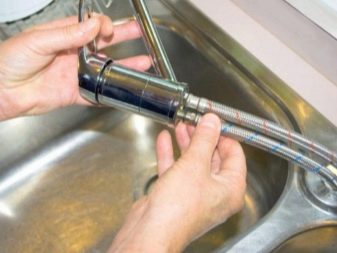
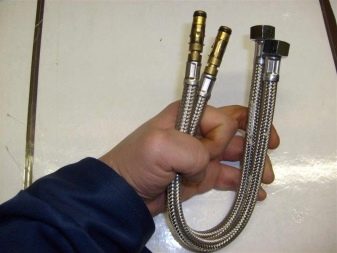
When buying a bellows hose for a faucet in the kitchen, you need to be guided by:
- water temperature and pressure indicators in the pipeline system: knowledge of these data will make it possible to purchase exactly the hose that fits perfectly;
- product diameter: for a kitchen sink, experts advise choosing a hose with a diameter of 10 mm;
- eyeliner length;
- integrity of fittings - there should be no defects or deformations.
Be sure to check that all material specifications are indicated. The seller must also have quality certificates.
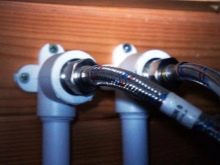
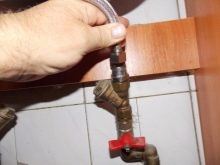
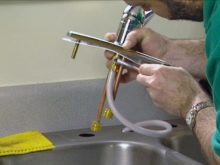
Tips for choosing hoses for kitchen faucets in the next video.










